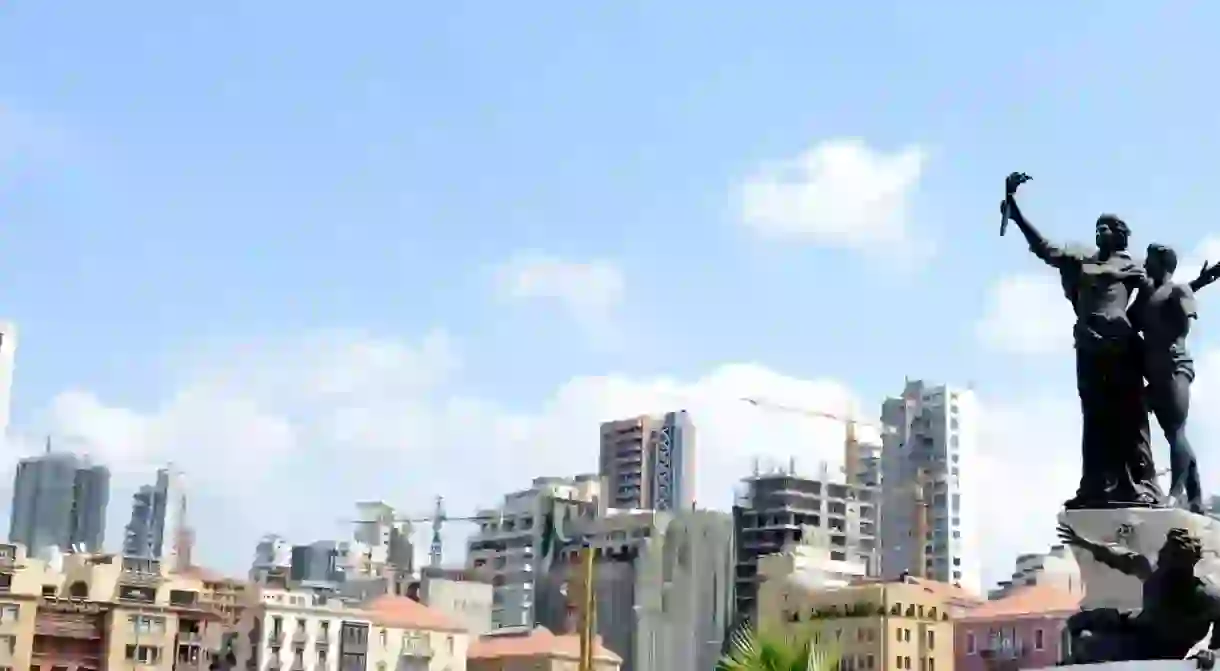A Brief History of Beirut's Martyrs' Square

Lebanon has had a rocky political history. From colonialism to civil war and occupation, this small country has experienced a lot of strife for its size. If you travel around Lebanon, you’ll see numerous tributes to its past. Martyrs’ Square in Beirut is one of the most iconic.
Today a popular spot for protest and civil gathering, Martyrs’ Square in Downtown Beirut is an iconic landmark. Named in 1931, it was set up as a tribute to martyrs executed by the Ottoman rule. The martyrs were protesting to end the Ottoman rule over Lebanon in favour of Arab Nationalist movements. Originally, it was an open space beyond the Ottoman city’s walls and was named ‘Sahat Al Burj’ – or ‘Tower Square’ – because it was marked by ‘Burj Al Kashef’. Under the French mandate, however, it became a modernized meeting place with kiosks, a tramway and souks.

In 1930, a sculpture of a Muslim and Christian woman holding hands over a coffin adorned the square. The scene was designed by local artist Youssef Hoyek as a testament to the locals coming together at a time of strife. The initial statue was changed, as in 1956, the foundations for the stone’s current monument in Martyrs’ Square were erected, but the actual monument as is today was not inaugurated until 1960. The structure was designed by Italian artist, Marino Mazzacurati.
During the Civil War, the square was used as a point that divided the city into East and West Beirut to indicate opposing sects. Subsequently, the spot was completely destroyed as buildings and statues fell to ruin under the rain of bullets and bombings. Like a lot of Beirut, not much survived in the wake of its 15-year war.
Later, it was renovated by USEK, a local university, as part of what is now Downtown Beirut. However, the bullet scarring was kept as a purposeful show of the monument’s history. After the assassination of then Prime Minister, Rafic Al Hariri, one of the main contributors to Downtown Beirut’s renovation, the square once again became a popular site for political activity and protest as people came together year after year to remember the late politician. Today, they come together to have their voice heard.














